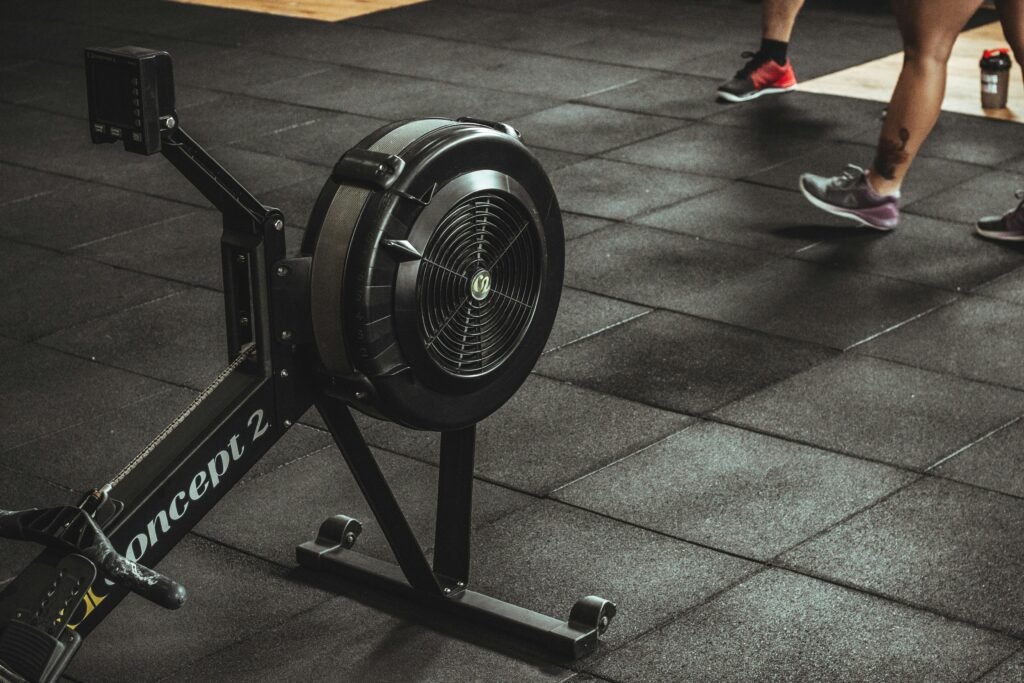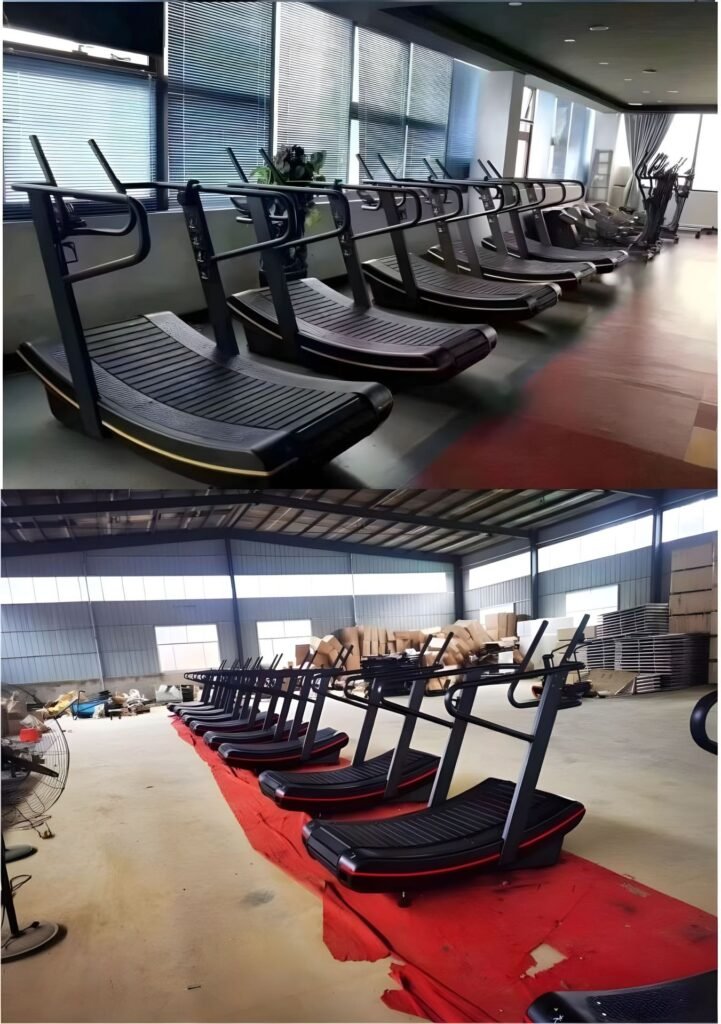The fitness industry’s growth shows no signs of slowing down, making it an exciting field for entrepreneurs and fitness enthusiasts alike. Whether you’re deepening your understanding of gym equipment or seeking to enhance your Fitness Studio or GYM CLUB, there’s always more to learn. This article delves further into key aspects, from equipment maintenance to tailored setups for different gym types, while highlighting the role of a trusted GYM Manufacturer.

How to maintain gym equipment for long-term use?
Proper maintenance of fitness equipment is essential to ensure its longevity, safety, and optimal performance. Neglecting maintenance can lead to frequent breakdowns, increased replacement costs, and even safety hazards for users.
For cardiovascular equipment like treadmills and ellipticals, regular cleaning is a must. Wipe down surfaces after each use to remove sweat, which can cause corrosion over time. Lubricating moving parts, such as treadmill belts, according to the manufacturer’s guidelines reduces friction and prevents wear. It’s also important to check for loose bolts or screws and tighten them regularly to avoid instability.
Strength training equipment, including dumbbells, barbells, and weight machines, requires attention to their structural integrity. Inspect weight plates for cracks, and ensure that the locking mechanisms on barbells and dumbbells are functioning properly. For resistance machines, check cables and pulleys for signs of fraying or wear, and replace them promptly if needed. Cleaning the upholstery on weight benches and machine seats with a mild disinfectant helps keep them in good condition and hygienic.
A reliable GYM Manufacturer often provides maintenance guidelines and may offer replacement parts, making it easier for gym owners to keep their equipment in top shape. Establishing a regular maintenance schedule, whether done in-house or by a professional service, is an investment that pays off in the long run.

What are the differences in equipment for home gyms vs. commercial gyms?
The gym equipment used in home gyms and commercial GYM CLUBs differs significantly based on usage frequency, space constraints, and user needs.
Home gyms typically prioritize space efficiency and versatility. Fitness equipment for home use is often compact and multi-functional. For example, a foldable treadmill or a compact multi-gym that combines several strength exercises in one unit is ideal for small spaces. Dumbbells with adjustable weights are popular as they save space compared to a full set of fixed-weight dumbbells. Portability is also a consideration, with many home gym tools being lightweight and easy to store when not in use.
Commercial gyms, on the other hand, require equipment that can withstand heavy, continuous use by multiple users daily. Fitness equipment in commercial settings is sturdier, with heavier frames and more durable components. Treadmills and ellipticals in commercial gyms have higher weight capacities and more powerful motors to handle extended use. Strength machines are often larger and designed for easy access from multiple angles, accommodating different users efficiently. They also tend to have more advanced features, such as adjustable settings and ergonomic designs to cater to a wide range of body types.
Cost is another differentiating factor. Commercial-grade equipment from a reputable GYM Manufacturer is generally more expensive due to its durability and advanced features, while home gym equipment is often more budget-friendly, balancing functionality with affordability.

How to design a gym layout that maximizes equipment usage?
Designing an effective gym layout is crucial for ensuring that gym equipment is used efficiently, members can move freely, and the space feels inviting.
Start by dividing the gym into functional zones based on equipment type. Create separate areas for cardiovascular equipment, strength training, functional training, and stretching. This helps members navigate the gym easily and reduces congestion. For example, placing treadmills, bikes, and ellipticals in a dedicated cardio zone near a window can make workouts more enjoyable with natural light, while strength machines can be grouped by muscle groups for convenience.
Traffic flow is key. Ensure there is enough space between equipment for members to move around safely, especially in high-traffic areas. Avoid placing large equipment in narrow corridors or near exits, as this can cause bottlenecks. Leaving open spaces for group classes or functional training with tools like kettlebells and medicine balls allows for flexibility in usage.
Consider the placement of accessories and amenities. Yoga mats, resistance bands, and water stations should be easily accessible throughout the gym. Mirrors are a valuable addition, not only for members to check their form but also to create the illusion of a larger space.
Consulting with a GYM Manufacturer or a gym design expert can provide insights into optimal equipment placement based on the specific dimensions of your space and the types of fitness equipment you have. A well-designed layout enhances the overall member experience and encourages consistent usage of all equipment.

What are the latest trends in fitness equipment for 2025?
The fitness equipment industry is constantly evolving, with new trends emerging to meet the changing needs and preferences of gym-goers. In 2025, several key trends are shaping the market.
Smart equipment is becoming increasingly popular. Fitness equipment integrated with advanced technology, such as touchscreens, Bluetooth connectivity, and fitness tracking apps, allows users to monitor their workouts, set goals, and even participate in virtual classes. Treadmills and bikes with interactive displays that simulate outdoor routes provide a more engaging workout experience.
Sustainability is another major trend. GYM Manufacturers are focusing on producing equipment made from eco-friendly materials, such as recycled plastics and sustainable metals. Energy-efficient machines, which consume less power during use, are also gaining traction as gyms strive to reduce their environmental footprint.
Functional and hybrid equipment is on the rise. Machines that combine multiple workout functions, such as a strength trainer that also allows for cardio or flexibility exercises, are in demand for both home and commercial gyms. This trend aligns with the growing interest in holistic fitness routines that target multiple aspects of health.
Inclusivity is a key consideration, with equipment designed to accommodate users of all abilities. Adjustable machines with a wide range of settings, as well as specialized equipment for individuals with disabilities, are becoming more common, ensuring that fitness is accessible to everyone.
Staying updated on these trends can help gym owners and Fitness Studio operators make informed decisions when upgrading or expanding their gym equipment, keeping their facilities relevant and appealing to members.

Why partnering with a reliable GYM Manufacturer matters?
The success of a GYM CLUB or Fitness Studio heavily depends on the quality and reliability of its fitness equipment, making the choice of a GYM Manufacturer a critical decision.
A reliable manufacturer ensures that the equipment is built to last, even under heavy commercial use. This reduces the need for frequent repairs and replacements, saving gym owners time and money in the long term. High-quality equipment also enhances the member experience, as it functions smoothly and safely, reducing the risk of injuries.
Consistent supply and support are other benefits. A reputable GYM Manufacturer maintains a steady inventory, ensuring that gym owners can source the equipment they need when they need it. They also provide excellent customer support, including technical assistance, warranty services, and access to replacement parts. This level of support is invaluable, especially for new gym owners who may need guidance on equipment selection and maintenance.
Customization options are often available, allowing gym owners to tailor the equipment to their specific needs. Whether it’s branding the equipment with the gym’s logo or choosing colors that match the facility’s design, customization helps create a unique identity for the gym.
Additionally, established manufacturers stay abreast of industry trends and innovations, offering the latest gym equipment that meets evolving user demands. This ensures that gyms can offer cutting-edge equipment, attracting and retaining members.
Gettinglong: Your Trusted Partner in Fitness Equipment
As a leading GYM Manufacturer, Gettinglong is committed to providing top-quality fitness equipment that meets the diverse needs of gym owners, from small Fitness Studios to large GYM CLUBs.

Gettinglong Company Background
For many years, we have been at the forefront of the fitness equipment industry. Our state-of-the-art manufacturing facilities have always ensured production quality, while our experienced team provides unparalleled technical support. We have a proven track record of exporting products worldwide, with a strong presence in Asia, Europe and America.
Quality Control and Global Supply
Our stringent quality control process ensures that every batch of fitness equipment meets standards. We work closely with our customers to ensure timely delivery and stable pricing, positioning their needs above market trends. Our dedication to customer satisfaction is reflected in our long-term partnerships, such as our decade-long partnership with one of the largest companies in the world.
Whether you’re looking to equip a new gym, upgrade existing gym equipment, or stay ahead with the latest fitness trends, Gettinglong has the expertise and products to support your success. Our commitment to quality, innovation, and customer service makes us the ideal partner for your fitness business.
Conclusion
From maintaining equipment to designing layouts and staying on top of trends, there’s a wealth of knowledge to master in the fitness equipment and gym business world. Choosing the right gym equipment and partnering with a reliable GYM Manufacturer like Gettinglong can make all the difference in creating a successful, member-focused facility. Whether you’re a gym owner or a fitness enthusiast, understanding these aspects enhances your ability to thrive in the dynamic and rewarding fitness industry.

